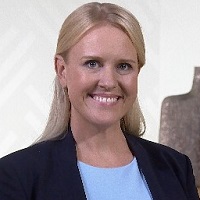Four Tips to Keep Your Wealth Transfer on Track
Incorporating family legacy planning into your financial plan is crucial to ensure the next generation knows how to serve as good stewards of the family’s wealth.


The Great Wealth Transfer is under way, and an estimated $84 trillion will change hands in the U.S. by 2045 as wealth accumulated by the Silent Generation and Baby Boomers makes its way to the next generations, according to Cerulli Research Group.
Studies show that successful multigenerational wealth transfer is easier said than done. In fact, 90%of affluent families see their wealth dissipate by the third generation, according to a study by The Williams Group. With this in mind, it is imperative for investors to consider the proactive measures they can implement today to defy this trend.
When preparing for a multigenerational wealth transfer, there are three foundational steps to address:
From just $107.88 $24.99 for Kiplinger Personal Finance
Be a smarter, better informed investor.

Sign up for Kiplinger’s Free Newsletters
Profit and prosper with the best of expert advice on investing, taxes, retirement, personal finance and more - straight to your e-mail.
Profit and prosper with the best of expert advice - straight to your e-mail.
- Collaborating with advisers to establish a sound financial plan.
- Partnering with attorneys to draft a comprehensive estate plan.
- Collecting and organizing crucial information — such as trust documents, account statements, etc. — all in one centralized location. There are resources available online to help families document their complete financial inventory.
While these initial steps are absolutely necessary, there is another component that is arguably even more important — family legacy planning. Often dubbed as the “softer side” of wealth management, it's an aspect that is sometimes overlooked, yet it may hold the key to long-term success. Surprisingly, the breakdown of wealth transfer is seldom due to inadequate financial planning or tax and legal complexities, according to The Heritage Institute and the book Entrusted by Andrew Howell and David York. Instead, the primary cause of unsuccessful outcomes lies in a lack of communication and trust.
We believe there is a burgeoning area in wealth management dedicated to family legacy planning. It is not surprising that with an aging population, an increasing number of financial professionals are opting to specialize in this field. We have identified four key strategies:
1. Openly communicating
Open and clear communication within the family is the cornerstone of a successful multigenerational wealth transfer. While this might seem basic, it is surprising how many families avoid these conversations.
Discussing your estate and financial plans with your loved ones helps align everyone's expectations and ensures they understand your intentions. Sharing the “why” of your estate is as important as the “what,” as this approach fosters trust, reduces the potential for disputes and empowers the next generation to be responsible stewards of the family's wealth.
2. Having regular family meetings
Family meetings serve as a crucial platform for open and constructive communication within the family. They provide a structured environment where family members can come together in a way that promotes transparency, alignment of goals and the nurturing of shared values.
A typical family meeting might include obvious topics — such as updates on the family’s estate plan and discussions about investment strategies — as well as unexpected topics like philanthropic goals, drafting a family mission statement, capturing family history and investment education for the rising generation.
It is also an opportunity for every family member to voice their thoughts, ask questions and contribute to the decision-making process. This structured approach ensures that everyone is on the same page and helps forge a unified path toward realizing the family's mission and preserving its legacy.
3. Creating a family mission statement
A mission statement is a short summary of what matters most to you as a family, the principles that guide you. Creating a mission statement together is a powerful way to reflect upon your values as a family and gives everyone a clear understanding of what you stand for and expect of each other.
Having a shared vision — a clear purpose, values and goals — provides a roadmap that lays out where you are headed as a family and how you will get there. It provides a clear framework and set of expectations to follow based upon your agreed-upon values and beliefs.
4. Building financial acumen
Financial education is crucial for the next generation. It empowers them with the knowledge and confidence to handle inherited wealth. This ensures they can make informed investment decisions and contribute to preserving and growing the family's assets, aligning with the family's values and goals.
With financial literacy, they are better prepared to navigate the complexities of wealth, ensuring a successful and responsible wealth transfer.
Putting it all together
Transferring wealth from one generation to the next can be challenging, but taking the time to help your family prepare for what’s ahead creates the best chance for success. Family legacy planning is an ongoing effort, not a one-time task. Embrace the journey, and with each step, you'll further solidify your family's financial legacy and discover the meaning of true “wealth” in a family.
Related Content
- Gen X Should Prepare Now for the Great Wealth Transfer
- Your Home Would Be a Terrible Inheritance for Your Kids
- How to Prepare for Upcoming Estate Tax Law Changes
- Uncertain Times Call for Creative Estate Planning Strategies
- IRS Quietly Changed the Rules on Your Children’s Inheritance
Profit and prosper with the best of Kiplinger's advice on investing, taxes, retirement, personal finance and much more. Delivered daily. Enter your email in the box and click Sign Me Up.

Krysta Dos Santos, CFP, is Head of Financial Planning at GenTrust. Krysta works to understand each client’s financial situation and then designs a customized plan to help them attain those targets they wish to achieve. She has a holistic approach that takes into consideration a variety of wealth management topics such as estate planning, tax strategies, philanthropic giving, risk mitigation, cash flow management, education funding and family legacy planning.
-
 A New 2026 Tax Deduction Change for People Over Age 65
A New 2026 Tax Deduction Change for People Over Age 65Tax Changes Adjustments to the extra standard deduction can impact the tax bills of millions of older adults. Here are some new amounts to know for 2026.
-
 2026 Family Tax Credits: Three IRS Changes You Need to Know Now
2026 Family Tax Credits: Three IRS Changes You Need to Know NowTax Credits While the child tax credit remains the same, other family tax credits are higher for 2026, including the earned income tax credit and other inflation-adjusted amounts. Here's what they're worth now.
-
 A 'Fast, Fair and Friendly' Fail: Farmers Irks Customers With Its Handling of a Data Breach
A 'Fast, Fair and Friendly' Fail: Farmers Irks Customers With Its Handling of a Data BreachFarmers Insurance is facing negative attention and lawsuits because of a three-month delay in notifying 1.1 million policyholders about a data breach. Here's what you can do if you're affected.
-
 Serving the HNW Market: How Financial Advisers Can Break Through and Deliver Lasting Value
Serving the HNW Market: How Financial Advisers Can Break Through and Deliver Lasting ValueFinancial advisers have a significant opportunity to serve high-net-worth clients by elevating their capabilities, delivering comprehensive planning, building diverse teams and prioritizing family wealth education.
-
 Don't Just Sell, Connect: How Financial Advisers Can Ignite Their Sales Growth
Don't Just Sell, Connect: How Financial Advisers Can Ignite Their Sales GrowthAvoid complacency and embrace small, consistent improvements to optimize your sales process and results.
-
 Are You a Small Business Owner Buckling Under Economic Pressure? Here's How You Can Cope
Are You a Small Business Owner Buckling Under Economic Pressure? Here's How You Can CopeSignificant emotional and financial challenges, including tariff worries, are piling up on small business leaders. Here's how leaders can develop more healthy coping strategies and systems of support.
-
 To Raise Prices or Not to Raise Prices: Tariff Tips for Small Businesses
To Raise Prices or Not to Raise Prices: Tariff Tips for Small BusinessesSmall businesses are making critical decisions. Should they pass on higher costs due to tariffs, or would that only cost them more in lost customers?
-
 Five Retirement Planning Traps You Can't Afford to Fall Into, From a Wealth Adviser
Five Retirement Planning Traps You Can't Afford to Fall Into, From a Wealth AdviserTo help ensure you reach your savings goals and enjoy financial security in your golden years, be aware of these common pitfalls. The key is to be proactive, informed and flexible.
-
 Your 401(k) Can Now Include Alternative Assets, But Should It? A Financial Adviser Weighs In
Your 401(k) Can Now Include Alternative Assets, But Should It? A Financial Adviser Weighs InMany employer-sponsored plans offer limited investment options, which can stunt growth. But participants considering alternatives might need some sound advice to get the most from their accounts.
-
 Will Taxes Shred Your 401(k) or IRA During Your Retirement? It's Very Likely
Will Taxes Shred Your 401(k) or IRA During Your Retirement? It's Very LikelyConventional wisdom dictates that you save in a 401(k) now and pay taxes later, but turning that rule on its head could leave you far better off. A financial planner explains why.